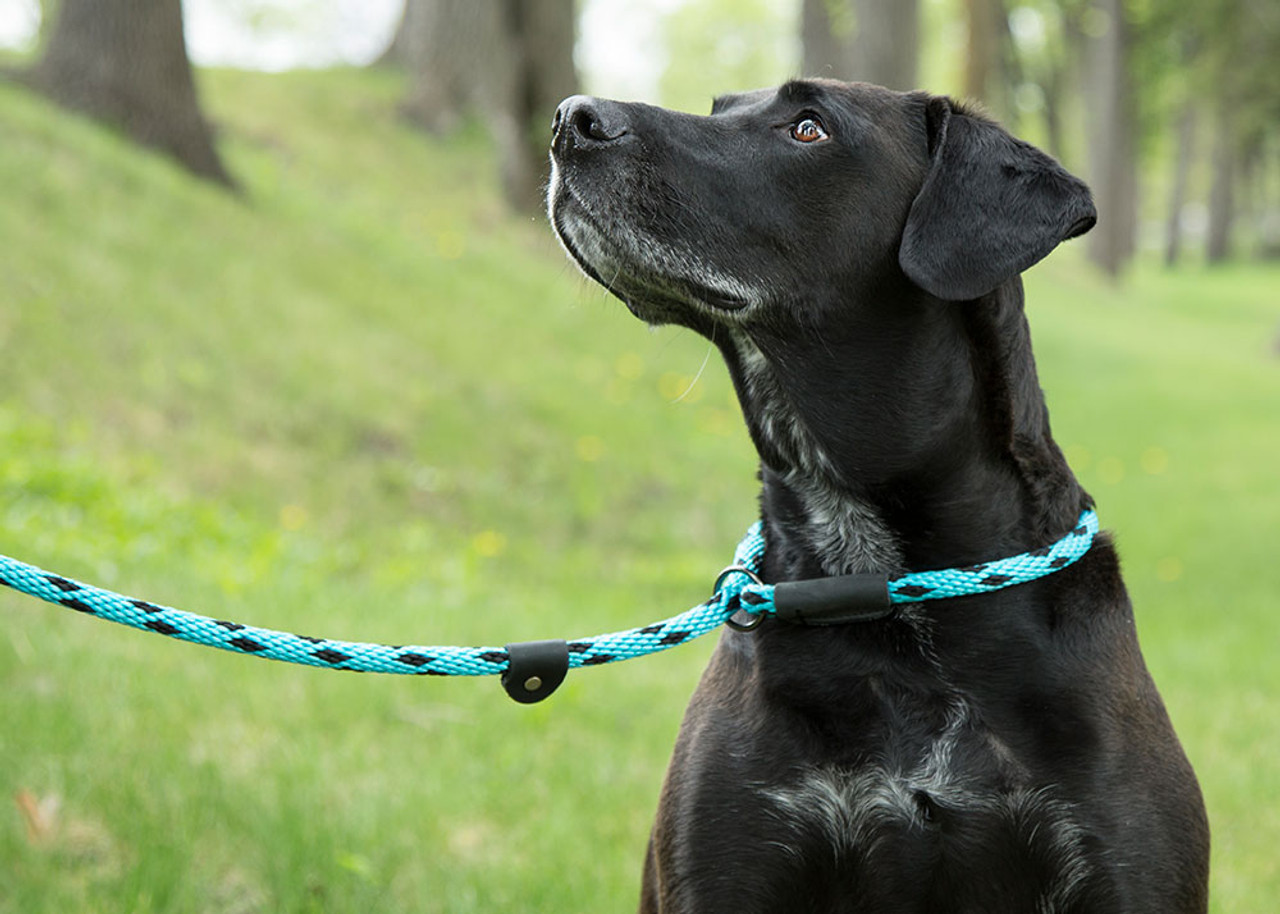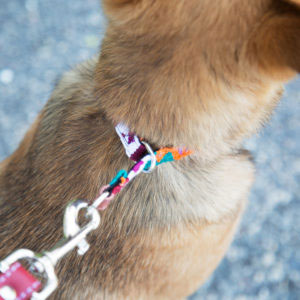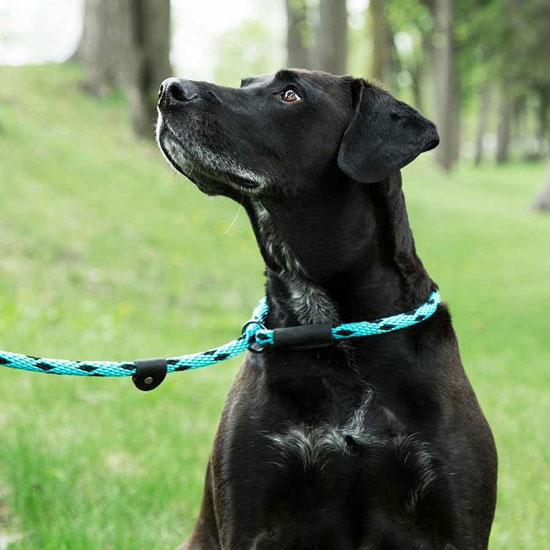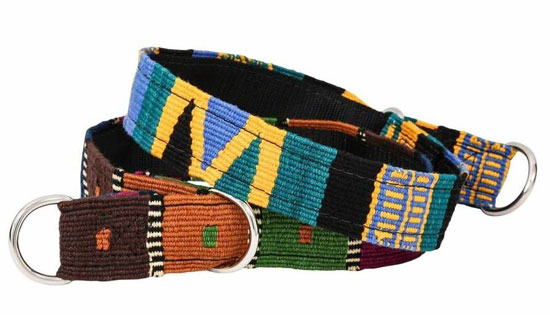As the name suggests, slip leads and collars simply slip over your dog’s head and have a slip action when pulled tight while around your dog's neck. They are excellent training tools to help your dog learn to behave while walking on a leash.
Slip Collar
Slip collars don’t have a traditional buckle closure. They are designed as a sliding or "slip" loop. One end of the collar is strung through the ring on the other end. The leash of your choice can then be easily attached to the sliding ring.
Slip Lead
If you’re using a slip lead, the collar and leash are combined instead of having a separate collar and leash. Being both a slip collar and lead in one, all it takes to correct your dog’s behavior is a slight tug of the leash. The slip leash will tighten, applying pressure to the dog's neck as he or she tries to pull or resist against the leash. It allows for a method of aversion training designed to teach the dog that his or her behavior is not acceptable.
How to Use
Thanks to their similar design, the process for outfitting your dog with a slip lead or collar is the same. Slip it over your dog’s head and position the slip ring at the back – scruff – of their neck.
If you’re using a slip collar, a snap leash will connect to the sliding ring. You can choose any type of leash that works for you and your dog just so it has a snap or clasp to attach to your dog's collar.
The slip collar or lead should be loose and comfortable when your dog is at rest. Ensure that you've chosen a slip lead or collar that's comfortable for your dog. Softer materials, such as nylon or polypropylene webbing or rope, are safer options than leather or other materials that don't have any cushion or give when you are beginning to get your dog used to a slip lead or collar. However, once a dog is well trained and responds well to slip lead correction, a good leather slip lead can't be beat for communicating with your dog most effectively. Most seasoned dog trainers usually recommend high quality leather leashes as the most effective material to use once a dog is trained.
When your dog pulls, the slip collar or slip lead will tighten. You should then give a quick, firm tug sideways on the leash and immediately release for correction. Do not continue pulling as this will continue squeezing your dog's neck and choke them.
When your dog corrects their behavior, the collar will loosen again. A slip collar should apply quick pressure to get their attention. It should not choke your dog, nor should it compress his or her airway.
Why Slip Leads & Collars are Effective
The pressure from the slip lead or collar becoming more snug around their neck gets their attention but doesn’t cause any harm. This pressure discourages the dog from pulling on the leash. With enough consistent training, your dog will learn to walk calmly beside you.
Slip collars and slip leads are quick, effective, and comfortable devices for training and everyday casual use. Most slip leads are also not bulky and usually roll up easily and fit in a pocket for storage.
Types of Slip Collars & Leads
Slip collars & slip leads can be found in many different materials and constructions.
Materials:
- Leather strap
- Rolled leather
- Waterproof strap
- Nylon webbing
- Polypropylene webbing
- Nylon rope
- Polypropylene rope
Construction:
- With a stopper tab (to ensure the collar doesn’t get too loose)
- Without a stopper tab
- With a handle
If you’re having a "ruff" time training your pup to walk nicely on a leash, a slip collar or lead may just be the solution you’ve been looking for. With consistent training and regular walks, you can teach your dog that pulling or lunging on the leash is negative behavior. Soon enough, taking walks will be a pleasure for both of you. Check out dogIDs' selection of slip leads and slip collars.
To learn about other types of collars and how to find the best fit for your dog, read our blog on choosing the right collar for your dog.




